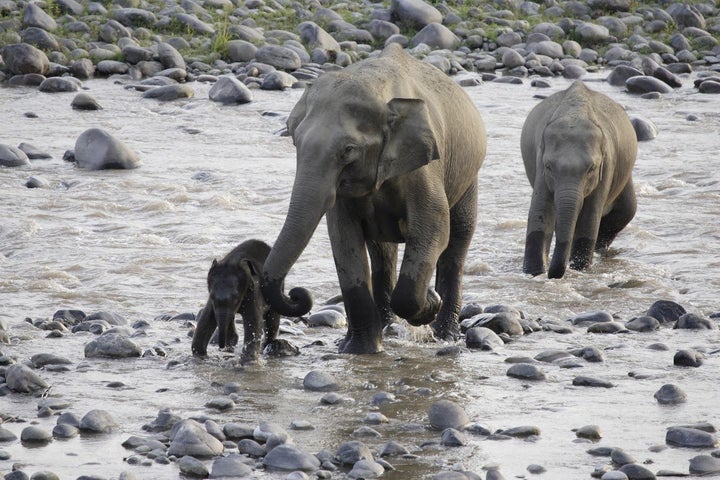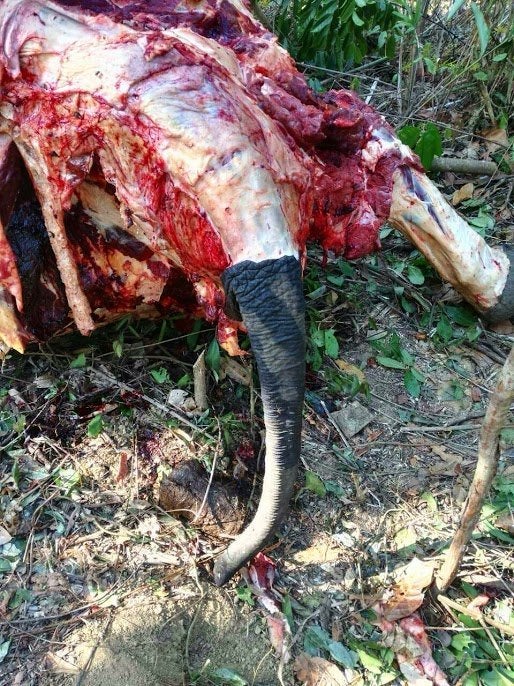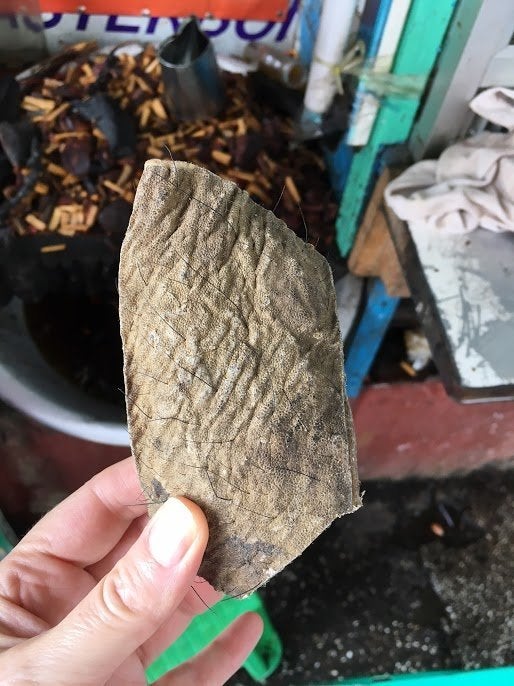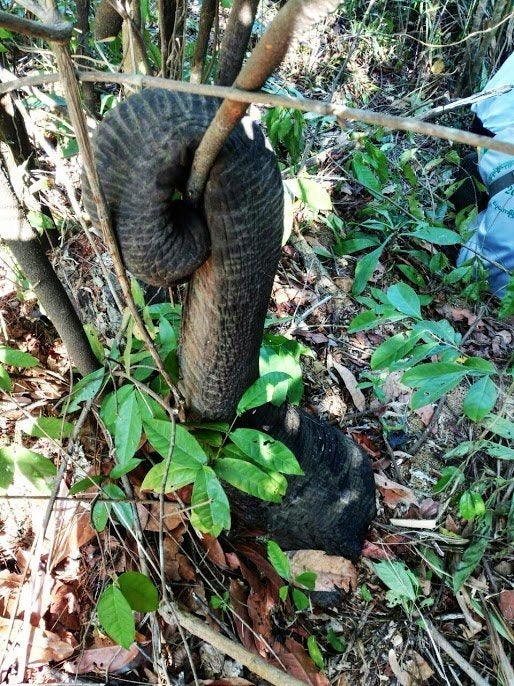
On Christmas Day last year, a two-month-old Asian elephant calf was found wandering alone near the beach resort town of Chaungtha in Myanmar’s Ayeyarwady region.
Forestry officials found the mutilated body of the calf’s mother the next day. The female elephant had been killed by poachers, her skin peeled clean off her body.
Warning: Disturbing images below.
Elephant poaching has long been an issue in Myanmar, but there was something unusual and troubling about the grisly discovery: The endangered Asian elephant was female, and she’d been killed for her skin.
Unlike their African counterparts, female Asian elephants don’t boast the long tusks that poachers seek for ivory. According to the World Wide Fund for Nature, this has allowed Myanmar’s female elephants to largely escape the deadly interest of poachers, resulting in imbalanced wild populations in which females significantly outnumber males.
But a recent — and indiscriminate — spate of elephant killings in Myanmar suggests a new threat is facing all of the nation’s elephants, and possibly those in other countries, too. It’s no longer just the tusks that poachers are after, but elephant skin and other body parts.
“We’ve lost more elephants in the past five months than in the whole of 2016. This is just shocking.”
- Rohit Singh, WWF wildlife law enforcement specialist
WWF said this week that at least 20 killed and skinned Asian elephants, including females and juveniles, have been found in the Bago Yoma and Ayeyarwady regions of Myanmar since January.
“This is a very serious poaching crisis we’re facing,” Rohit Singh, a WWF wildlife law enforcement specialist, told HuffPost over Skype on Thursday. “We’ve lost more elephants in the past five months than in the whole of 2016. This is just shocking.”
Poachers use poison-laced arrows to kill the elephants, shooting the animals before stalking them as they die a slow and painful death. They then slice up the carcasses, pull the skin off in strips and chop off saleable body parts like feet (said to be “tasty”) and penises (for use in traditional medicine).
“With the skin trade, all elephants are targeted,” said Singh, speaking from his office in Cambodia’s capital, Phnom Penh. “We’ve found mothers and calves brutally killed and skinned.”

Elephant numbers have been plunging in Myanmar since at least 2012.
The government said in January that elephant poaching in the country had increased tenfold since then, fuelled by a growing demand for not just ivory but for elephant hide and other body parts.
Myanmar has the world’s second-largest population of Asian elephant (India has the most). Though precise numbers are unknown, WWF said the Southeast Asian country may have as few as 1,500 elephants now left in the wild.

The spiking demand for elephant skin in Myanmar appears to stem from a new “fad” in traditional medicine. The origins of this trend remains a mystery, said Singh. But elephant hides have been appearing with increased frequency in local markets across the country, where it’s touted as a miracle cure for skin problems like eczema and even pimples.
Singh was quick to point out that there is no scientific evidence to suggest that this is true. “It’s just skin,” he said. “There’s no medicinal value.”
He added that it’s unclear whether elephant skin is truly even a “traditional” product. “We have heard some cases in Africa where elephant hide has been used for medicinal purposes, but in Asia, this is the first time we’re hearing about it,” he said. “It may not actually have traditional value.”

In January, AFP reporters described vendors selling slices of elephant skin, priced at a few dollars per square inch, at the foot of the famous Golden Rock Pagoda in Myanmar’s Mon State.
“Elephant’s skin can cure skin diseases like eczema,” said one shop owner, who was also hawking porcupine quills and snake skins. “You burn pieces of skin by putting them in a clay pot. Then you get the ash and mix it with coconut oil to apply on the eczema.”
The Guardian reported this week that elephant products from Myanmar have also been making their way across the border to China, where demand for body parts like trunks, feet and penises is on the rise. Elephant skin is “particularly in demand” for traditional medicine purposes, the outlet wrote.
Singh said that there’s an acute concern that the “medicinal” reputation of elephant skin may spread across the region and elsewhere, thus boosting demand and posing a potential threat to elephants worldwide.
“We know, for example, what’s happening to rhinos,” he said, referring to how the demand for rhino horn in Asian traditional medicine has fueled a poaching crisis not just in Asia, but in Africa, too. “We know this sudden demand puts huge pressure on a species. If we want to protect the future of Myanmar’s elephants, we need to act now. We need to address the problem before it gets out of control.”

WWF launched a campaign this week called “Save Their Skins” in an effort to raise awareness and funds to combat Myanmar’s poaching crisis. The organization said it’s now working closely with the Myanmar government to train and equip rangers with anti-poaching technology to tackle the problem on the ground. WWF said it also plans to engage local communities on the issue and to figure out ways to dampen demand for elephant parts.
The Wildlife Conservation Society has also worked with local officials to develop a conservation action plan to protect Myanmar’s elephants. The 10-year plan was unveiled in January.
Asian elephants are considered an endangered species by the International Union for Conservation of Nature. Over the past 50 years, more than 60 percent of the species has been lost in the wild.
“Everyone talks about the African elephant and the threats facing them,” said Singh this week, “but the Asian elephant, too, has not been untouched.”
